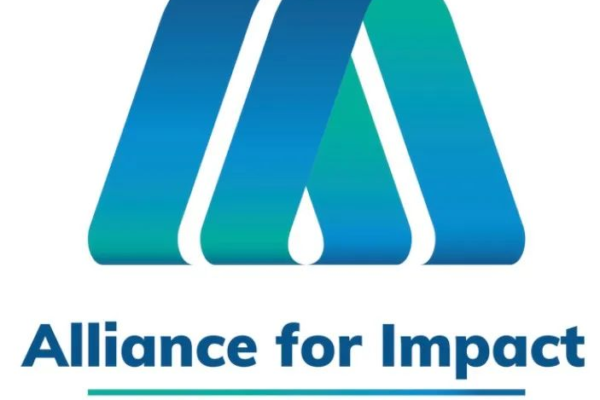Delta variant surge pushes Alaska’s sparse health care infrastructure to the brink
In the past two weeks, Alaska’s case count increased by 72 percent, the highest in the country, as it tops state case and death records.
By Jean Lee and Ben Kesslen
9/30/2021
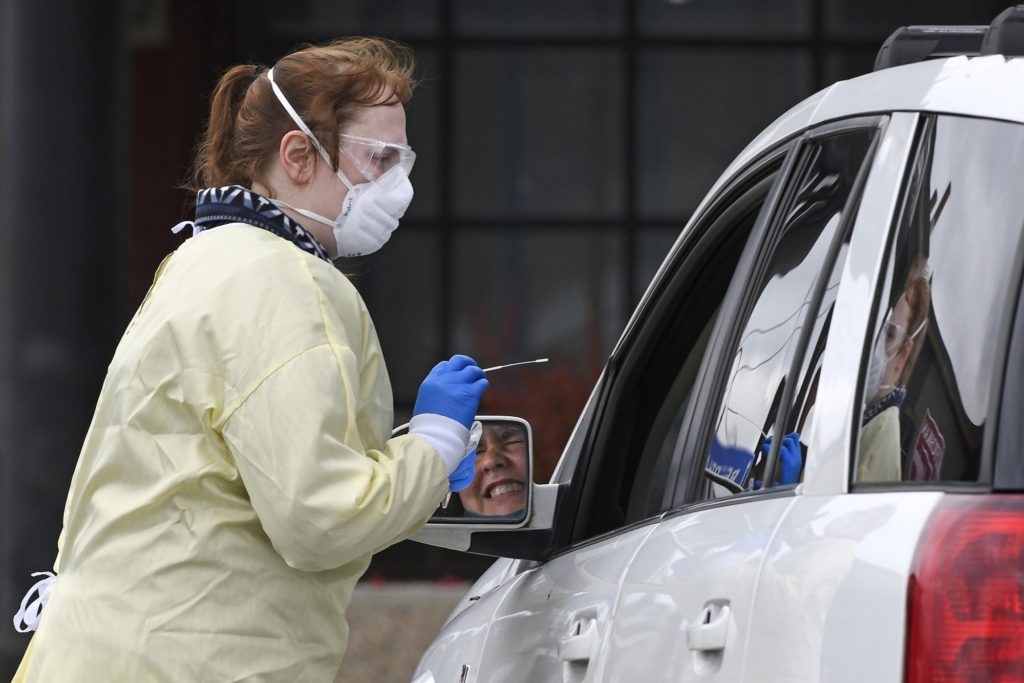
Seven days a week, Stephannie Christian puts on a gown, gloves, an N95 mask and a face shield to travel across rural Alaska, bringing oxygen tanks to the homes of patients with severe Covid-19 cases.
Christian, 41, is a physician assistant for Tanana Chiefs Conference, a tribal consortium that works to meet the health needs of 42 Native Alaskan villages in interior Alaska. Since the delta variant became the prominent strain in the state, Christian has been working at a breakneck pace, always on call.
Roughly the size of Texas, interior Alaska is served by one main hospital, Fairbanks Memorial. Tanana is trying to bridge the gap with outpatient care. Christian does house calls, checks in on about 20 people a day and fields calls in the middle of the night from patients who can’t breathe. Sometimes she travels by plane to multiple sites in a day because the distance is too far to travel by car.
But cases are rising too fast for health care professionals in the state like Christian to keep up.
After setting a record seven-day average for cases and deaths over the weekend, Alaska broke those records again Monday and then Tuesday broke the record for seven-day average for deaths. The state was averaging 1,289 cases per day and 12 deaths per day as of Monday. In the past two weeks, its case count increased by 72 percent, the highest in the nation.
With the third-lowest number of intensive care unit beds per person in the country, the state’s already-sparse health care infrastructure is overwhelmed. Hospitals are activating crisis standards, the government is flying in hundreds of health care professionals from out of the state, and public health officials have little recourse as state leaders hold firm on their opposition to mask mandates or distancing restrictions.
“We get in the health care field to help people, and it’s really hard when we can’t do that,” Christian said.
Before the pandemic, hospitals were already continuously close to capacity, Anne Zink, chief medical officer for the Alaska Department of Health and Social Services, said. Residents are lucky if they can even access a hospital within driving distance. Zink said she was used to flying some patients to the lower 48 who couldn’t find a doctor or another place in Alaska to access care.
There might be a patient in the northwest part of Alaska who might need an ICU bed, and if there is only one available in the southeast, it could be risky transporting them because of the sheer expanse of Alaska. Not to mention the challenge for families who would then be hundreds of miles away from their loved one.
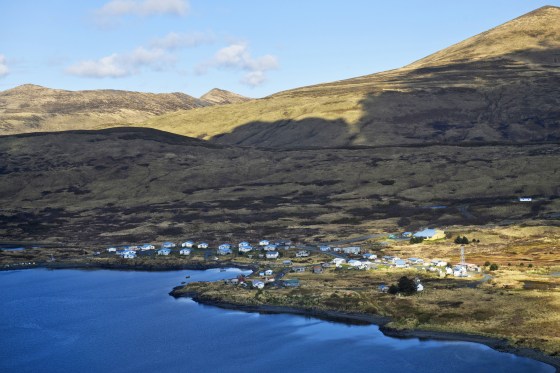
“It’s not just about driving down the street or even driving two or three hours to an ER hospital,” Zink said. “This is multiple flights and sometimes takes days to be able to get to any hospitals.”
Low statewide vaccination rates are making matters worse. Alaska has fully vaccinated 50 percent of its population, trailing the U.S. average of 55 percent, according to an NBC News tally. Alaska was an early leader in vaccinations and was the first state to open up vaccinations to anyone 16 or older, but rates plateaued in the early summer.
“It’s heartbreaking to see people sick and struggling to breathe and regretting decisions to not protect themselves or family,” Zink said. “We have been seeing this increase for almost 10 weeks now and keep hoping that it will turn around … but I would say hope in itself is not a strategy.”
Jacoline Bergstrom, executive director of health services at Tanana Chiefs Conference, said as delta surged, some elders in Native communities caught the virus and struggled to access care because of limited hospital ICU beds. She said the communities are relatively small and “tight-knit,” so every loss was deeply personal for almost everyone.
Bergstrom has been having regular calls with tribal leaders to recommend Covid-19 prevention measures. She said many tribal communities have put themselves in lockdown and regulated who could enter to protect their elders and the most vulnerable people from the virus.
But that’s not the case across the board.
Alaska Gov. Mike Dunleavy has been a vocal critic of mask mandates. While he has said the vaccine is the best way to fight Covid, he isn’t actively encouraging residents to get the shot. At a news conference in August, he said people should talk to their doctor about the vaccine “if that’s what they want to do.”
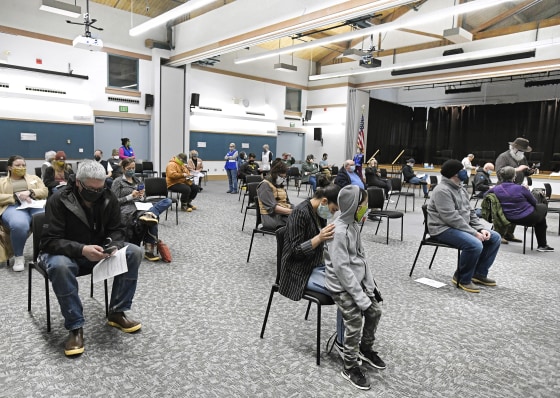
In Anchorage, the state’s biggest city, where about 40 percent of Alaskans live, mask mandates have turned into a highly contentious matter.
Residents packed the city’s Assembly chamber Tuesday to debate a proposed indoor mask mandate, as Assembly members had to pause the meeting multiple times due to fighting, according to the Anchorage Daily News.
Anchorage’s new Republican mayor, Dave Bronson, has called mask mandates “unconstitutional,” “bad policy” and scientifically unfounded.
Vaccines have been “pretty heavily politicized” too, Michael Bernstein, chief medical officer of the state’s largest hospital, Providence Alaska Medical Center, said. “There are elected officials that believe it’s an individual’s right, which is true, but are not weighing the importance to the community and the greater good.”
Bernstein said he isn’t seeing any broad support for past public health measures and restrictions used before vaccines were available.
In the meantime, his hospital in Anchorage is rationing care under crisis standards. Providence crafted its pandemic crisis preparations in March 2020 and almost went a year and a half before having to use them. Recently, a patient who needed 24-hour continuous dialysis had to share the machine with someone else, only getting 12 hours of treatment a day, due to limited resources.
“We need to let the public know where we are,” he said. “We’re making choices we never wanted to make.”
Schools grapple with thousands in isolation or quarantine as delta variant rages
Many schools that planned to forgo virtual and hybrid learning this year, in favor of in-person classes, are revisiting those plans as outbreaks require students to quarantine.
By Daniella Silva
9/05/2021
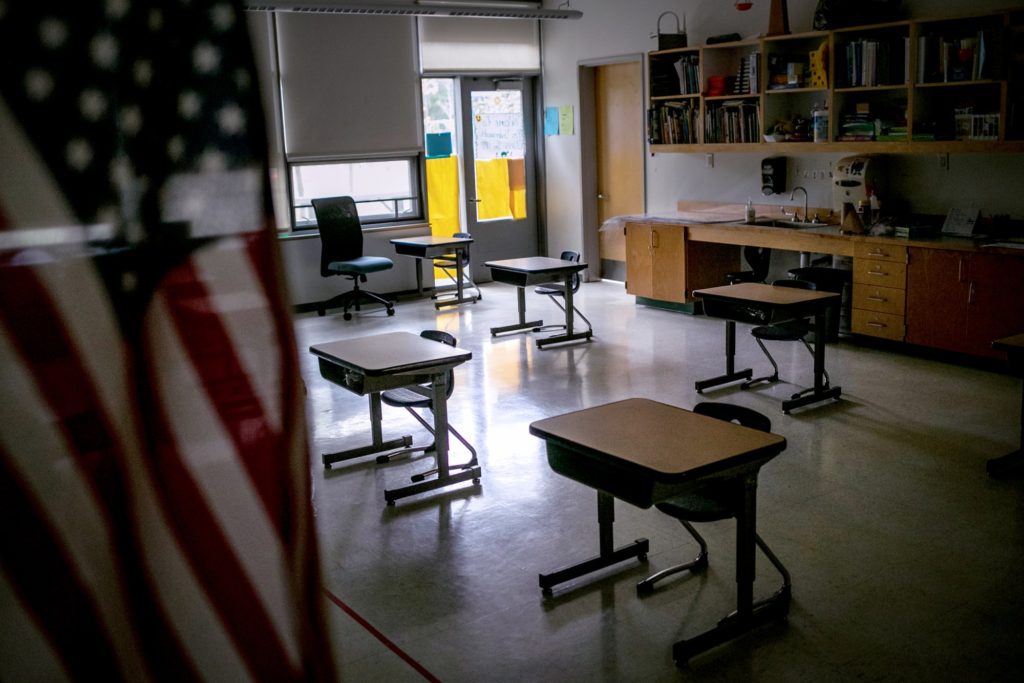
Schools that have opened their doors to students amid the spread of the highly contagious delta variant of the coronavirus already are grappling with how to best continue teaching students when hundreds and sometimes thousands of them are in quarantine.
As cases of Covid-19 started to wane over the spring and the early summer, many schools planned to forgo virtual and hybrid learning this year, in favor of in-person classes. But the lag in vaccination rates and the rapid spread of the delta variant have led districts to revisit those plans, with varying results.
Some schools have sent students home with packets of self-guided work to submit at the end of each day or when on-campus classes resume. Others have temporarily switched to virtual learning. And in some cases, schools have canceled classes altogether while campuses are closed or kids are in quarantine.

In Mississippi, officials last month said more than 20,000 students were in quarantine from exposure to the coronavirus after the first week of school.
The high quarantine numbers among students and staff members led at least 29 schools to “go virtual for a short time in order to interrupt transmission,” the state’s epidemiologist said.
Similarly, the Connally Independent School District in Texas, which opened to students Aug. 18, closed its schools for in-person classes Tuesday after two teachers died last week of Covid. The five schools in the suburban Waco district hastily switched to remote learning and are scheduled to reopen for in-person learning after Labor Day.
“If this pandemic has taught us one thing, it is the ability to change directions quickly,” Connally Elementary School Principal Eric Cantu wrote in a note to parents on the district’s website. “Going from Face to Face learning to remote learning is an example of this.”
More than 300 miles east, however, in Iraan, Texas, learning was put on hold for two weeks when schools closed because of a Covid outbreak in August, about a week into the school year.
Iraan-Sheffield Independent School District Superintendent Tracy Canter said in the letter to the school district’s community Aug. 16 that neither virtual nor remote learning would take place during the closure, but that teachers would be available by email.
She said schools would still meet the minimum 75,600 minutes of instructional time required by law, in part by turning two early-release days into full days of school.
“We know that this is difficult for everyone involved and we thank you for your support and patience during this unprecedented time,” Canter said in the letter.
School districts are confronting the dilemma of how to keep the school year going as the number of parents who want their children to go to in-person school drops.
Only 43 percent of public school parents and guardians said they wanted their children in a classroom full time this year after the Centers for Disease Control and Prevention on July 27 updated its health guidance to recognize the threat of the delta variant.
That was down from 58 percent of parents and guardians who said they wanted in-person instruction before July 27, according to a survey funded by the CDC through the Atlanta-based nonprofit CDC Foundation. It polled 1,448 public school parents and guardians July 23-Aug. 8.
Just more than half of the nation’s largest 100 school districts are planning to make a remote learning option available to all students, according to the University of Washington’s Center on Reinventing Public Education, while 92 will offer some type of remote instruction.
In Florida’s Hillsborough County Public Schools, thousands of students have been quarantined since the start of the school year in August.
Teachers are putting lessons and instructional material online for kids in quarantine and sending out electronic devices or providing physical copies of work based on student need, Jennifer Sparano, the district’s Covid coordinator, said.
She said work is done independently, with check-ins from teachers, but the district is looking into hiring teachers and support staff to be available online during the day to give children live access to a teacher if their own ones are not available because they are teaching in a classroom.
There were more than 7,380 reported Covid cases and nearly 9,270 students and staff in isolation or quarantine, as of Friday, according to a district dashboard. Last Friday, there were more than 5,270 reported Covid cases and nearly 12,000 students and staff in isolation or quarantine, according to the dashboard. The total district population is more than 240,000.
A symptom-free student could still be out of school for five to seven days, under the district’s quarantine procedures, though Sparano said said many students don’t typically miss five full days of school.
In Metro Nashville Public Schools in Tennessee, from Aug. 9 to Aug. 15, there were 95 staff who were isolated or quarantined, with 52 confirmed cases and 980 students were isolated or quarantined, with 207 confirmed cases. From Aug. 16 to Aug. 22, there were 143 staff isolated or quarantined, with 67 confirmed cases and 2,879 students isolated or quarantined, with 395 confirmed cases, according to Sean Braisted, the district’s executive officer of communications and community engagement.
Isolated or quarantined students can access their course information and assignments online and the district offers remote learning assistance to students, he said in an email. Parents must also verify a student participated in all instructional activities, he said.
In the Northeast, where many schools don’t reopen until after Labor Day, school districts are announcing return plans that include planning for continuing education in quarantine.
New York City, which houses the nation’s largest school system and where all public school teachers and staff must get vaccinated, is planning to try to limit the number of students who have to quarantine.
In elementary schools, a classroom will be required to quarantine for 10 calendar days in the event of a positive test in that class and students will continue to receive instruction while they quarantine. But in middle and high schools, students who are at least 12 years old, vaccinated and not showing symptoms will be allowed to continue to attend school in-person. Students who are at least 12 years old, vaccinated and showing symptoms will have to quarantine for 10 calendar days and will have access to remote learning while quarantining. Unvaccinated students will have to quarantine for 10 calendar days, continue learning remotely, and will be allowed to return with a negative result after the seventh day.
The city’s strategy is designed to avoid the disruption of major school closures, which would be necessary only in case of widespread transmission in the school, the New York City Department of Education said in a health and safety guide.
“Our commitment to parents is to minimize disruption this year, keep as much continuity as possible and make sure all those health and safety measures are in place,” New York City Mayor Bill de Blasio said.




